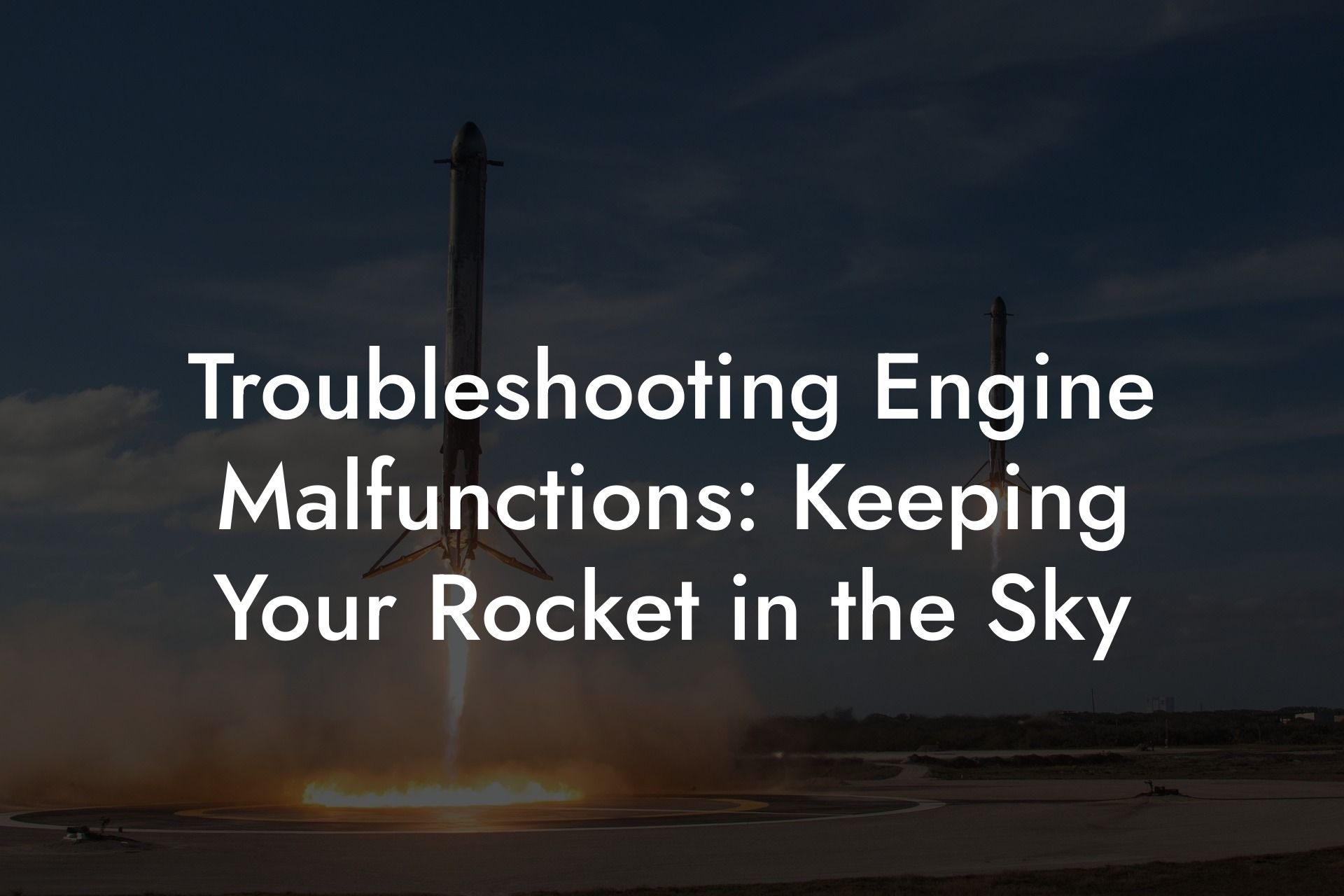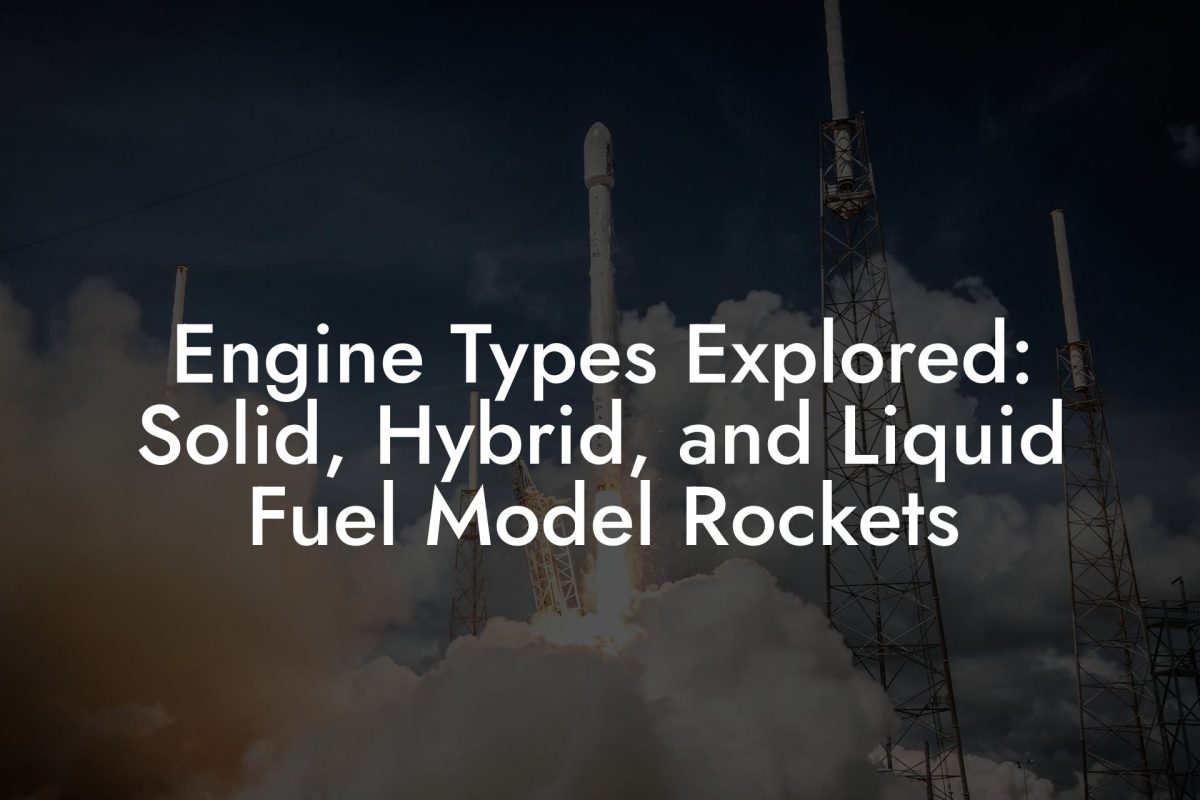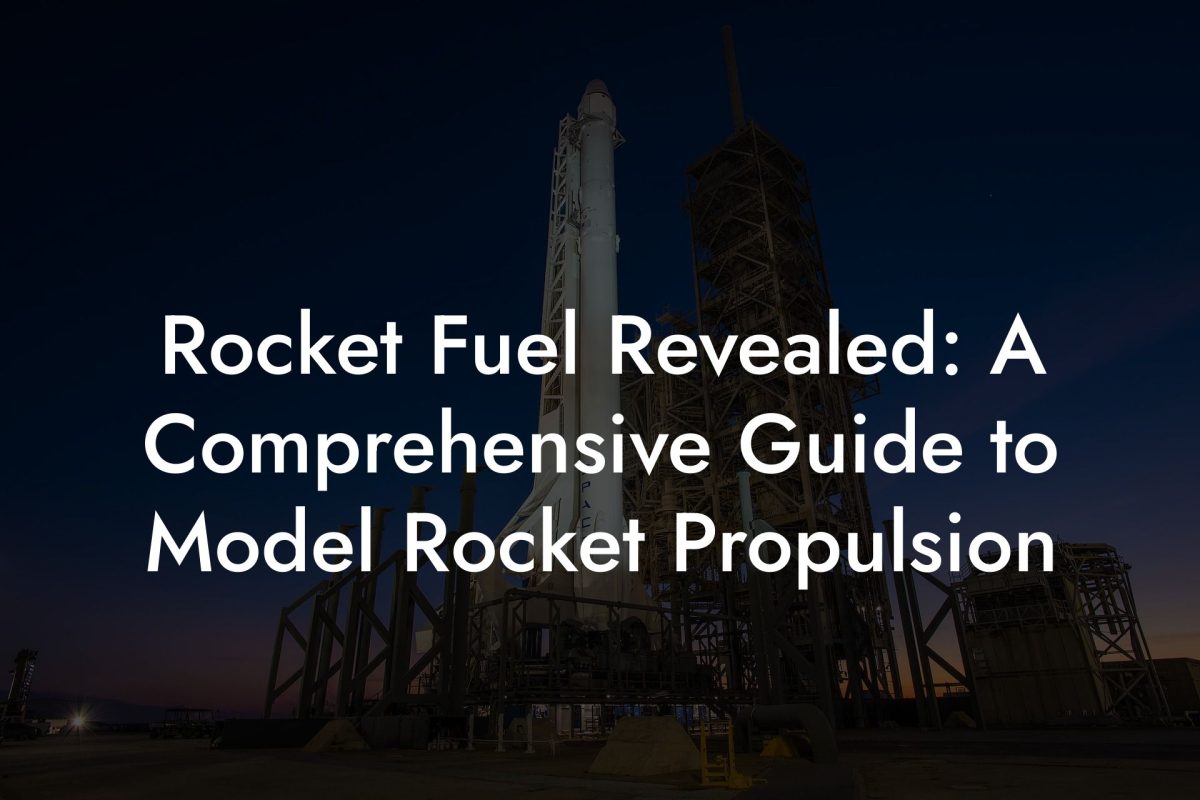Every rocket enthusiast knows that even the best-engineered engines can sometimes throw a curveball. Welcome to "Troubleshooting Engine Malfunctions: Keeping Your Rocket in the Sky", a practical guide to diagnosing, fixing, and preventing engine issues so that your rocket continues to soar with confidence. Whether you're a seasoned rocketeer or a newcomer facing your first hiccup, these insights and tips will help you quickly get back on track.
Quick Links to Useful Sections
- Understanding Engine Malfunctions
- Common Engine Malfunctions and Their Causes
- Step-by-Step Troubleshooting Guide
- Step 1: Perform a Visual Inspection
- Step 2: Evaluate Fuel Quality and Storage Conditions
- Step 3: Check Assembly and Alignment
- Step 4: Conduct a Controlled Test Launch
- Step 5: Analyze Data and Identify Anomalies
- Step 6: Implement Repairs and Adjustments
- Preventative Maintenance for Long-Term Engine Health
- Advanced Troubleshooting Tools and Techniques
- Digital Simulation and CFD Analysis
- Data Acquisition Systems
- High-Speed Video Analysis
- Model Rocket Engine Troubleshooting FAQs
- Your Next Launch: Keep Your Rocket in the Sky with Confidence
Understanding Engine Malfunctions
Engine malfunctions can occur for a variety of reasons, from fuel inconsistencies to mechanical wear and improper assembly. Common symptoms include erratic thrust, premature burnout, and abnormal engine noises. Recognizing these signs early is the first step to troubleshooting effectively.
Knowing the basics of how your engine is supposed to perform helps you spot deviations. Recall that proper engine performance is defined by consistent burn rates, predictable thrust output, and stable combustion. Any deviation from these parameters can signal an underlying issue.
Common Engine Malfunctions and Their Causes
Let’s explore some typical engine problems and what might be causing them:
- Weak or Inconsistent Thrust: This could be due to degraded fuel quality, improper fuel grain formulation, or issues with the propellant mixture.
- Premature Burnout: Often caused by insufficient fuel loading, damage to the fuel grain, or misaligned components that disrupt the combustion process.
- Engine Casing Damage: Cracks or delamination in the engine casing can occur from repeated launches or impact, leading to loss of pressure during combustion.
- Nozzle Blockage or Erosion: Residue buildup, improper sealing, or high temperatures can cause the nozzle to become partially blocked or erode over time, reducing thrust efficiency.
- Delayed or Failed Recovery Ejection: If the ejection charge is weak or the delay element malfunctions, the recovery system might not deploy correctly, affecting the overall mission.
Step-by-Step Troubleshooting Guide
Follow these steps to diagnose and address engine malfunctions:
Looking For The Best Model Rocket Kits? You'll Love These:
Step 1: Perform a Visual Inspection
Before launching, inspect your engine for visible signs of damage such as cracks, dents, or fuel residue. Check the nozzle for any blockage and ensure all components are securely attached.
Step 2: Evaluate Fuel Quality and Storage Conditions
Poor fuel quality or improper storage can significantly impact performance. Verify that your fuel has been stored in a cool, dry environment and check for any discoloration or unusual odors.
Step 3: Check Assembly and Alignment
Ensure that the engine is properly mounted within the rocket body. Misalignment can lead to uneven burning and loss of thrust. Revisit your assembly instructions and confirm that each component is correctly positioned.
Step 4: Conduct a Controlled Test Launch
If possible, perform a test launch in a safe, controlled environment. Use high-speed cameras or onboard sensors to record engine performance. Compare the data to expected performance parameters.
Step 5: Analyze Data and Identify Anomalies
Look for deviations in thrust curves, burn duration, and overall impulse. Use any available digital simulation or CFD tools to compare real-world data with your engine’s design specifications.
Step 6: Implement Repairs and Adjustments
Depending on the findings, you may need to:
- Replace degraded fuel or re-cast the fuel grain.
- Repair or reinforce the engine casing.
- Clean or replace the nozzle to ensure efficient exhaust flow.
- Re-align components to restore proper engine mounting.
Make adjustments one at a time and retest to determine the effect of each modification.
Preventative Maintenance for Long-Term Engine Health
Regular maintenance is key to minimizing engine malfunctions. Incorporate these best practices into your routine:
- Regular Inspections: Check engine components after each launch and look for signs of wear or damage.
- Proper Cleaning: Gently remove residue and soot from the engine casing and nozzle using recommended cleaning agents.
- Optimal Storage: Store fuel and engines in a controlled environment to prevent degradation.
- Documentation: Keep a detailed log of each launch, including any malfunctions and the corrective actions taken. This will help identify recurring issues over time.
A proactive approach to maintenance will not only extend the lifespan of your engine but also ensure consistent performance.
Advanced Troubleshooting Tools and Techniques
For rocketeers seeking a deeper level of analysis, advanced diagnostic tools can provide invaluable insights:
Digital Simulation and CFD Analysis
Use simulation software to model engine combustion and airflow. This can help pinpoint areas of inefficiency or potential failure before they manifest in a physical launch.
Data Acquisition Systems
Integrate sensors and data loggers into your rocket to monitor real-time engine performance, including temperature, pressure, and thrust levels.
High-Speed Video Analysis
Record test launches with high-speed cameras to capture detailed visuals of engine behavior. Analyzing this footage can reveal subtle issues that might not be evident from data alone.
Leveraging these advanced tools can transform your troubleshooting process from reactive to proactive, enabling you to optimize engine performance systematically.
Model Rocket Engine Troubleshooting FAQs
Here are some frequently asked questions to help you further understand and troubleshoot engine malfunctions:
1. What are the first signs of an engine malfunction?
Common signs include weak or inconsistent thrust, premature burnout, unusual noises, or visible damage to the engine casing and nozzle.
2. How can I tell if my fuel has degraded?
Degraded fuel may exhibit changes in color, texture, or odor. It may also burn irregularly during test launches.
3. What should I do if the engine is misaligned?
Check your assembly to ensure the engine is properly seated and aligned within the rocket body. Re-adjust and secure the engine if any misalignment is found.
4. Can nozzle issues affect overall engine performance?
Yes, a blocked or eroded nozzle can significantly reduce thrust by disrupting the flow of exhaust gases.
5. How important is regular maintenance in preventing malfunctions?
Regular maintenance, including cleaning and inspection, is critical to catching potential issues early and ensuring long-term engine health.
6. What role do test launches play in troubleshooting?
Test launches provide real-world data on engine performance and help identify discrepancies between expected and actual behavior.
7. Are there specific tools that can help diagnose engine problems?
Yes, digital sensors, high-speed cameras, and CFD simulation software can all offer insights into engine performance and help diagnose issues.
8. What safety precautions should I follow during troubleshooting?
Always wear protective gear, follow manufacturer guidelines, and perform troubleshooting in a safe, controlled environment.
9. How do I decide when to repair or replace an engine?
If repeated inspections and test launches indicate persistent issues or significant damage, it may be time to repair critical components or replace the engine entirely.
10. Can I modify my engine to prevent future malfunctions?
Yes, modifications such as improved fuel formulations, enhanced engine mounting, or upgraded nozzles can help prevent common malfunctions and boost overall performance.
Your Next Launch: Keep Your Rocket in the Sky with Confidence
Troubleshooting engine malfunctions can seem daunting, but each challenge is an opportunity to learn and improve. With careful inspection, regular maintenance, and the right diagnostic tools, you can ensure that your rocket’s engine performs reliably time and time again.
Embrace the process of troubleshooting as a vital part of your rocketry journey. Every fix brings you closer to the perfect launch, and every lesson learned fuels your passion for innovation. So, gear up, fine-tune your engine, and keep your rocket soaring high, because the sky is just the beginning.
Looking For The Best Model Rocket Kits? You'll Love These:
Useful Interruption: Dive deeper into the world of Model Rockets with our most popular sections. If there is anything you think is missing or anything you would love for us to write about, just give us a shout.
- Getting Started & Basics With Model Rockets
- Model Rocket Design, Build & Customization
- Model Rocket Propulsion & Engine Technology
- Model Rocket Launch Techniques & Recovery
- Model Rocket Advanced Rocketry & Innovations
- Model Rocket DIY and Customization
- Model Rocket Equipment Reviews & Digital Tools
- Community, Competitions & Education
- Model Rocket Troubleshooting & FAQs
- Model Rocket Bonus/Seasonal & Niche Topics
A group of model rocket enthusiasts gathered at a field for their weekly launch event. Among them was Dave, a seasoned builder known for pushing the limits of hobby rocketry. This time, he had outdone himself.
“Ladies and gentlemen,” Dave announced, dramatically pulling a cloth off his latest creation, “I present to you: The Kraken!”
The crowd gasped. This wasn’t just a model rocket, it was a monster. The thing stood 8 feet tall, had six clustered engines, and was covered in enough duct tape to qualify as a classified aerospace project.
“Dave,” muttered Steve, the cautious safety officer, “Have you, uh… done the math on this?”
“Math?” Dave scoffed. “I built it in my garage at 3 a.m. with parts from eBay. This is an art piece, Steve.”
The countdown began.
5…
4…
3…
2…
1…
The engines ignited with a BOOM, and The Kraken shot up… kind of. It immediately did a violent barrel roll, narrowly missing the spectators before skyrocketing at an angle that could only be described as “legally questionable.”
The crowd collectively ducked as The Kraken flew straight over the adjacent cornfield, where Old Man Jenkins, the grumpiest farmer in town, was minding his business.
KABOOM!
The rocket disappeared behind the barn. A moment later, a flaming piece of Estes igniter wire landed at Steve’s feet. The silence was deafening.
And then, an unmistakable sound echoed across the field.
Jenkins’ shotgun being cocked.
“DAVE!!!” Steve shouted. “RUN.”
And that was the day Dave invented the first-ever biologically powered rocket booster: pure adrenaline.
To this day, nobody knows where The Kraken landed, but legend has it, it still haunts the skies, terrifying unsuspecting drones and low-flying birds.






